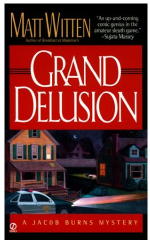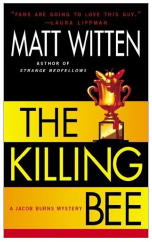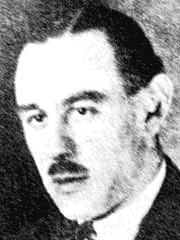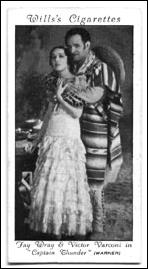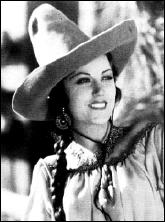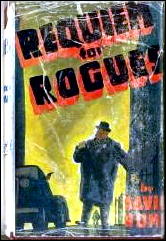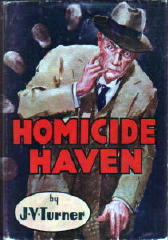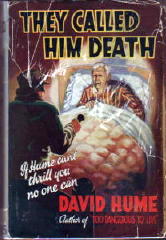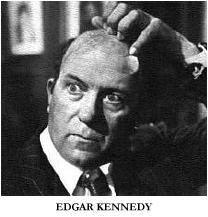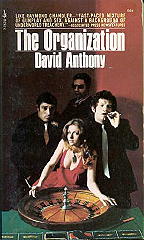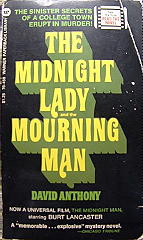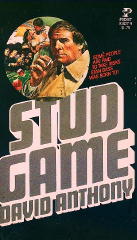MATT WITTEN – Breakfast at Madeline’s.
Signet, paperback original; 1st printing, May 1999.
I don’t what the following data signifies, probably nothing, since a book’s sales ranking on Amazon can fluctuate wildly. There are so many books listed there, all in competition with each other, and except for the top 100 or so, all so closely packed together, they should called tied. One sale and the ranking can go up by a million, just like that.
In any case, as a writer of mystery novels, all of Matt Witten’s books are out of print, but as of tonight (01 May 2009) two of them are doing awfully well. (Relatively speaking, of course. Also note that rankings go down as far as the seven millions.) The fellow doing the sleuthing in all four is a struggling screenwriter living in Sarasota Springs NY named Jacob Burns:
The Jacob Burns mysteries –
Breakfast at Madeline’s. Signet, pbo, May 1999. Amazon.com Sales Rank: #172,411
Grand Delusion. Signet, pbo, Jan 2000. Sales Rank: #1,700,960
Strange Bedfellows. Signet, pbo, Nov 2000. Sales Rank: #172,444
The Killing Bee. Signet, pbo, Nov 2001. Sales Rank: #1,601,905
I’ve read only this first one, Breakfast at Madeline’s, so I don’t know what the future holds for Jacob Burns, but I’d better take back the “struggling” part of the description above. He’s struck oil, figuratively speaking, Hollywood style, having just earned a million dollars for doing the screen adaption for an “epic” called Gas, about “deadly fumes seeping out of the earth’s core after an earthquake and threatening to destroy the entire population of San Francisco.”
One thing I do know, is that there are four books in the series, and there isn’t likely to be any more, not right away anyway. Matt Witten is not a big name on the tip of the general public’s collective tongue, but right now he’s certainly a big man in high-rise Hollywood circles, and that’s what counts. Writing mystery paperback originals is not anything he’s going to need to do for a long time to come:
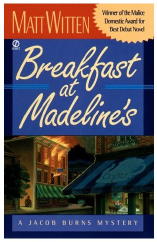
Credits on IMDB since 2002: Producer or supervising producer for CSI: Miami, JAG, House M.D., Supernatural, Women’s Murder Club and Medium.
If you see what I mean. Witten is probably still a nice guy, though, since Jacob Burns, his leading character certainly is, and guys who aren’t so nice would find it, I suspect, awfully hard to create characters who really are. Nice, that is. And still living in Sarasota Springs NY.
Burns is also happily married, and even though he comes awfully close to straying in this book, he says no and walks away, just before the point of no return. Burns also has two lovable little boys named (well, nicknamed) Gretzy and Babe Ruth, with whom he has a lot of fun, and likewise the same.
Dead is an old man who hung out at Madeline’s Espresso Bar, a loner who spent most of his time scribbling on paper but known to all of the usual habitues, artsy types all, most of them members of the Sarasota Council Arts Councils and whom seem to get all of the available grant money, but Donald Penn (the dead man), no.
Just before he died, Penn gave Burns the key to a safety deposit box, and inside? That’s the story, and all of the aforementioned artsy types want to know, too.
Told in a friendly but wise-ass sort of way, there are probably too many F-words used for this to properly be called a cozy, but it is anyway. At least there’s no graphic violence, as long as you don’t count all of Jacob Burns’ very narrow escapes. There’s only a small amount of actual detection involved, but (come to think of it) there’s enough to form the basis of a pretty good TV series out of Burns’ adventures.
I wonder if Matt Witten knows anyone who might be interested.
